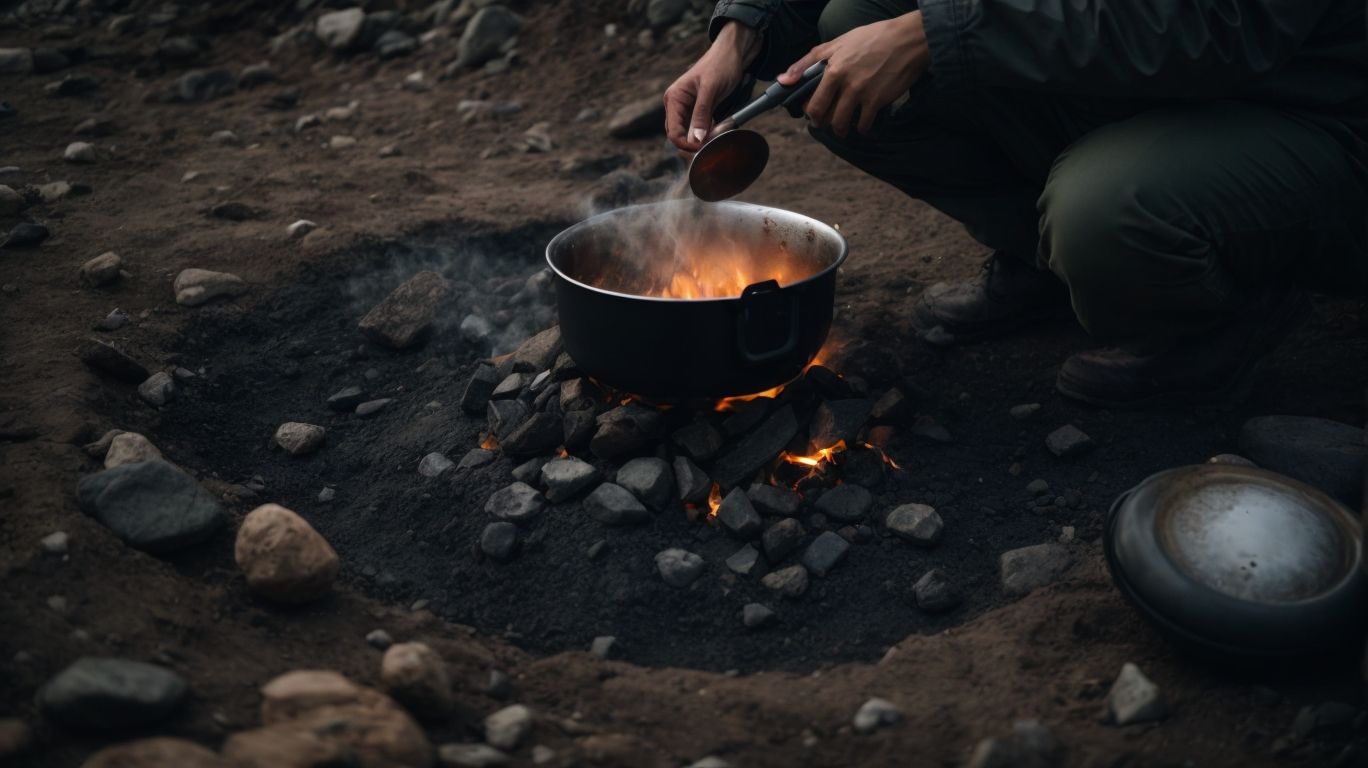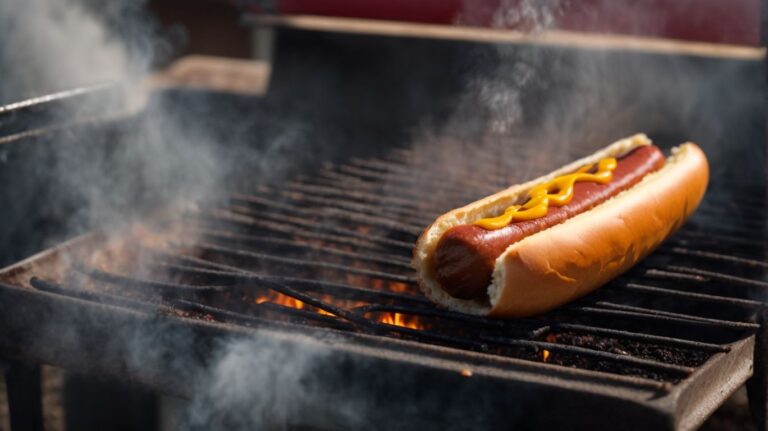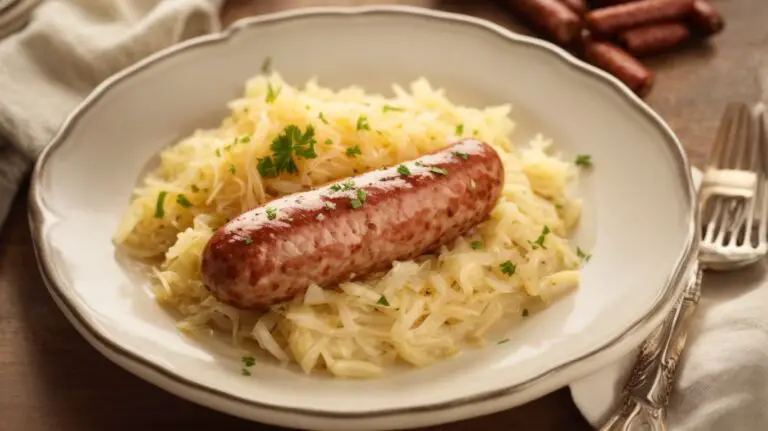How to Cook Underground?
Have you ever heard of cooking underground? This unique method of preparing food not only adds a fascinating twist to your culinary skills but also brings out incredible flavors in your dishes.
In this article, we will explore what cooking underground is all about, the benefits it offers, how to prepare for it, different methods to try, delicious recipes to whip up, and essential tips to ensure a successful cooking experience.
Join me on this gastronomic adventure as we delve into the world of underground cooking!
Key Takeaways:
What is Cooking Underground?
Cooking Underground refers to the culinary practice of preparing and cooking food below the ground surface, often using methods that involve slow cooking over an extended period.
In different cultures around the world, cooking underground has a deep-rooted historical significance. The concept of cooking food in pits dug into the earth dates back centuries, with indigenous communities pioneering this method as a way to harness the natural heat of the earth.
This traditional practice not only served as a practical cooking technique but also held cultural significance for many societies. For example, in Polynesian cultures, the cooking origin story of the ‘imu’ – an underground oven – is intertwined with their beliefs and rituals, making it a sacred part of their culinary heritage.
What are the Benefits of Cooking Underground?
The benefits of cooking underground are manifold, from infusing rich smoky flavors into the food to achieving tender and succulent meat textures.
When engaging in underground cooking, also known as ‘pit cooking’ or ‘earth oven cooking’, the process of slow cooking the ingredients in a covered pit not only imparts a depth of flavor that is unmatched but also helps retain the natural juices within the meat, resulting in incredibly moist and tender dishes. This traditional method of BBQ has been passed down through generations, deeply rooted in cultural practices and culinary heritage.
Preparing for Cooking Underground
Proper preparation is key when getting ready for cooking underground, requiring meticulous planning and attention to detail.
One of the essential steps in underground cooking is selecting ingredients. Picking fresh, high-quality components is crucial for a successful dish.
Next, setting up the cooking area is vital to ensure a safe and efficient process. Saul always emphasizes the importance of a well-organized space before starting any cooking project.
Also, ensuring proper equipment is in place is a fundamental aspect. Jay is a stickler for checking and double-checking that all the necessary tools are available and in good working condition. Anthony, on the other hand, stresses the significance of safety measures in underground cooking to prevent any accidents or mishaps.
Choosing the Right Spot
Selecting the ideal location for cooking underground is crucial to ensure optimal cooking conditions and results.
When choosing a spot for underground cooking, factors such as soil type, proximity to heat sources, and environmental considerations play a vital role.
Frankie, Wes, and Albert suggest that the soil should be free of rocks and debris to ensure even heat distribution. The proximity to heat sources like hot springs or geothermal activity can significantly impact cooking times and temperatures. Considering environmental factors such as wind exposure and groundwater levels is essential for a successful underground cooking experience.
Gathering Necessary Tools and Ingredients
Assembling the right tools and quality ingredients is essential for successful underground cooking, ensuring that the flavors and textures meet the desired standards.
When embarking on an underground cooking adventure, it’s imperative to have the proper equipment at your disposal. From shovels and tongs to thermometers and Dutch ovens, each tool plays a vital role in achieving that perfectly cooked Picanha. Ochoa’s Smokehouse, known for its exceptional cuts of meat, is a go-to source for top-notch beef to elevate your dishes. Following the advice of experts like Ryan Mitchell can further enhance your underground cooking experience. Remember, quality tools and ingredients are the backbone of culinary success below the surface!
Methods of Cooking Underground
Various methods are employed for cooking underground, ranging from traditional pit cooking to modern techniques using specialized ovens and grills.
Historically, pit cooking has been used by numerous cultures around the world, where food is buried under the ground and cooked slowly over hot coals; a practice that enhances the flavors and tenderness of the ingredients. On the other hand, contemporary methods like Ed Mitchell’s Barbeque or the Sara Range showcase how culinary experts have adapted traditional techniques, infusing them with new flavors and styles. The rise of modern equipment like the Mega Texas BBQ, equipped with precision temperature control and smoke-infusion systems, has revolutionized the art of underground cooking.
Using a Pit
Utilizing a pit for underground cooking involves digging a hole, creating a natural oven that imparts unique flavors to the food as it slow-cooks.
Once the pit is dug, many steps go into preparing it for cooking. First, kindling like wood or charcoal is used to create a base layer of hot embers at the bottom of the pit. This ensures consistent heat for the cooking process. After this, the food, such as the marinated G. Garvin’s LowCountry Steak, is placed on a grate or wrapped in foil and carefully lowered into the pit. Close attention must be paid to regulating the temperature by adjusting the airflow and covering the pit with dirt or a metal lid.
Using a Clay Oven
Cooking underground with a clay oven offers a controlled environment for slow roasting meats and vegetables, ensuring even heat distribution and retention of natural juices.
This method has been practiced for centuries, with the roots of this tradition deeply embedded in various cultures around the world.BBQ enthusiasts like Nathan and culinary experts such as Adrian Miller often praise the unique flavors that this cooking technique imparts to the food. The process of cooking in a clay oven not only infuses the dishes with a smoky essence but also allows for the ingredients to cook gently, resulting in dishes that are tender and juicy. The clay oven acts as a natural insulator, preserving the moisture within the food and enhancing its overall succulence. It’s a method that truly elevates the dining experience, creating dishes that are rich in taste and history.
Using a Fire Pit
Employing a fire pit for underground cooking involves building a fire, allowing it to create the necessary heat for cooking, and then burying the food to slow-cook to perfection.
In the world of fire pit cooking, Saul, Jay, and Anthony are considered masters. To start, once your fire pit is set up, it’s crucial to manage the fire properly. Ensure you have a good bed of hot embers to maintain consistent heat for the duration of the cook. Next, the type of wood used impacts the flavor; hardwoods like oak or hickory give a rich smoky taste.
In terms of food preparation, seasonings should complement the slow cooking process. Meat, vegetables, and even desserts can be cooked underground, creating tender and flavorful dishes.
Recipes for Cooking Underground
Delve into the world of tantalizing recipes that are perfect for underground cooking, such as the delectable Clay-Baked Fish infused with aromatic flavors and tender textures.
Imagine embarking on a culinary journey with Nathan to prepare this exquisite dish – the process involves carefully marinating the fish in a blend of herbs and spices, followed by wrapping it in banana leaves before sealing it in a clay pot for slow cooking underground. The result is a dish that captivates the senses with each bite – moist, flavorful, and cooked to perfection. Pair it with Albert’s signature roasted vegetables for a complete underground dining experience that will leave your guests in awe.
Underground Roasted Chicken
Indulge in the succulent flavors of Underground Roasted Chicken, a classic dish that exemplifies the art of underground cooking with its juicy meat and smoky undertones.
Creating your own Underground Roasted Chicken is a fascinating culinary journey that combines traditional BBQ techniques with innovative methods.
- Start by marinating the chicken in a flavorful blend of herbs and spices, allowing Wes and Joel’s expertise to guide your choice of seasonings.
- Once marinated, the chicken is carefully wrapped in foil and buried underground, where it slowly roasts to tender perfection over a low fire. The cooking time will vary depending on the size of the chicken, but patience is key to achieve that melt-in-your-mouth texture.
- As the chicken cooks, the earthy aroma infuses the meat, creating a unique depth of flavor that will surely impress your guests. Serve this delectable dish with your favorite sides for a memorable culinary experience.
Vegetable Stew in a Pit
Experience the wholesome goodness of Vegetable Stew in a Pit, a hearty dish that combines fresh vegetables and aromatic herbs cooked to perfection in the earthy confines of an underground pit.
When preparing this unique dish, it’s essential to start by gathering necessary tools and ingredients. Begin by selecting a variety of colorful vegetables such as carrots, potatoes, bell peppers, and zucchini. These veggies not only add vibrant flavors but also create a beautiful presentation once the stew is ready.
For seasoning, the Sara Range of spices works wonders, infusing the stew with a rich depth of flavors. Think of cumin, paprika, and fresh herbs like thyme and rosemary to enhance the taste profile.
The cooking process of the Vegetable Stew in a Pit is a true art form. The Mega Texas BBQ pit is ideal for this recipe, providing a consistent heat source and smoky essence that elevates the dish to new heights.
Clay-Baked Fish
Savor the exquisite flavors of Clay-Baked Fish, a culinary delight that showcases the delicate balance of fresh seafood, herbs, and spices, all cooked to perfection in a clay oven.
Clay-baking is a traditional cooking method that infuses the fish with a unique earthy aroma and retains its natural juices, ensuring a moist and flavorful outcome. To prepare this dish, you’ll need a whole fish, such as snapper or sea bass, gutted and scaled. Begin by marinating the fish with a blend of Adrian Miller’s signature spice mix, combining elements like paprika, cumin, and garlic powder to enhance its taste profile.
Tips for Cooking Underground
Master the art of underground cooking with valuable tips and techniques that focus on monitoring cooking time, temperature control, and safety measures throughout the culinary process.
In terms of mastering underground cooking, paying attention to Wes and Jay>’s recommendations can make a significant difference in your culinary outcomes.
Ensuring that you have a reliable timer to monitor cooking time is crucial in achieving perfectly cooked dishes. Understanding the nuances of temperature regulation is key – whether you’re using hot stones or burying ingredients underground, maintaining consistent heat levels is essential for successful cooking. Prioritizing safety protocols, such as wearing protective gear and properly handling equipment, ensures a smooth and secure cooking experience.”
Monitoring Cooking Time and Temperature
Ensuring precise monitoring of cooking time and temperature is essential in achieving optimal results when cooking underground, as it impacts the flavors and textures of the final dish.
Cooking underground goes beyond just heat and time; it’s a tradition deeply rooted in cultural heritage and storytelling.
For instance, in the rich culinary history of Black Smoke: African Americans, the meticulous attention to cooking temperatures was a way to preserve flavors passed down through generations. Nathan, a seasoned cook, knows that even a few degrees can make a significant difference in the tenderness of the meat or the depth of the spices.
The art of underground cooking, as cherished by veterans like Albert, is a delicate dance of timing and temperature control, elevating each dish to a culinary masterpiece.
Ensuring Safety and Hygiene
Prioritizing safety and hygiene measures is paramount in underground cooking to prevent foodborne illnesses and ensure a clean culinary environment.
When engaging in underground cooking, it’s crucial to follow the guidance of experts in culinary safety like G. Garvin’s LowCountry Steak. Their emphasis on cleanliness not only enhances the taste of dishes but also safeguards against health risks.
Wes and Anthony highlight the importance of proper food handling procedures, from washing hands diligently to sanitizing equipment. Regular maintenance of cooking tools and surfaces is vital to prevent contamination and ensure optimal cooking conditions. Adhering to these protocols can create a safe and enjoyable cooking experience below ground.
Experimenting with Different Ingredients and Methods
Embark on a culinary adventure by experimenting with diverse ingredients and innovative cooking methods in the realm of underground cuisine, allowing for creativity and exploration.
With the fascinating cooking origin story underlying this distinct culinary world, enthusiasts like Jay and Sara Range have been known to push boundaries and redefine traditional dishes.
To truly embrace the spirit of underground cooking, consider incorporating unusual spices, exotic fruits, or even edible flowers into your recipes.
Experiment with unconventional techniques such as smoking, fermenting, or sous vide cooking to add depth and complexity to your creations. Let your imagination run wild and taste the thrill of culinary ingenuity!
Frequently Asked Questions
1. What is the best way to cook food underground?
The most effective way to cook food underground is by creating an underground oven, also known as a pit oven. This method involves digging a hole in the ground, lining it with hot coals, and placing the food on top of the coals before covering it with dirt.
2. How do you know when the food is cooked underground?
The cooking time for food cooked underground varies depending on the type and size of the food. A general rule of thumb is to cook meats for 1 hour per pound and vegetables for 30 minutes. You can also use a meat thermometer to ensure that the internal temperature of the food has reached a safe level.
3. Can you cook anything underground?
Yes, you can cook a variety of foods underground, including meats, vegetables, and even bread. However, it is important to choose foods that can withstand the high heat and are not too delicate to handle the cooking process.
4. What type of equipment do I need to cook food underground?
You do not need any special equipment to cook food underground. All you need is a shovel, hot coals, and a piece of foil or cloth to cover the food. However, you can use a Dutch oven or cast iron pan for certain dishes, which can withstand high heat.
5. Is it safe to cook food underground?
Yes, it is safe to cook food underground as long as you follow proper guidelines and precautions. Make sure to use gloves and tools to handle the hot coals and always check that the food reaches a safe internal temperature before consuming.
6. Can you cook food underground in any type of soil?
It is recommended to use sandy or loamy soil for cooking food underground as they retain heat well and are easier to dig. Avoid using clay or rocky soil as they can be challenging to dig and may not provide enough heat for cooking.




